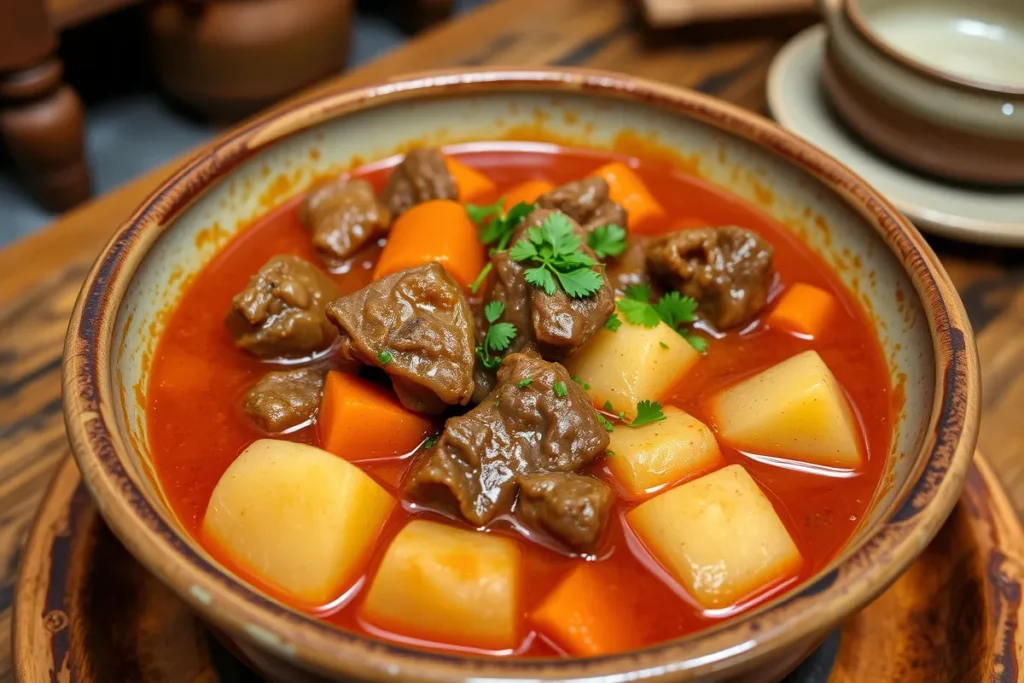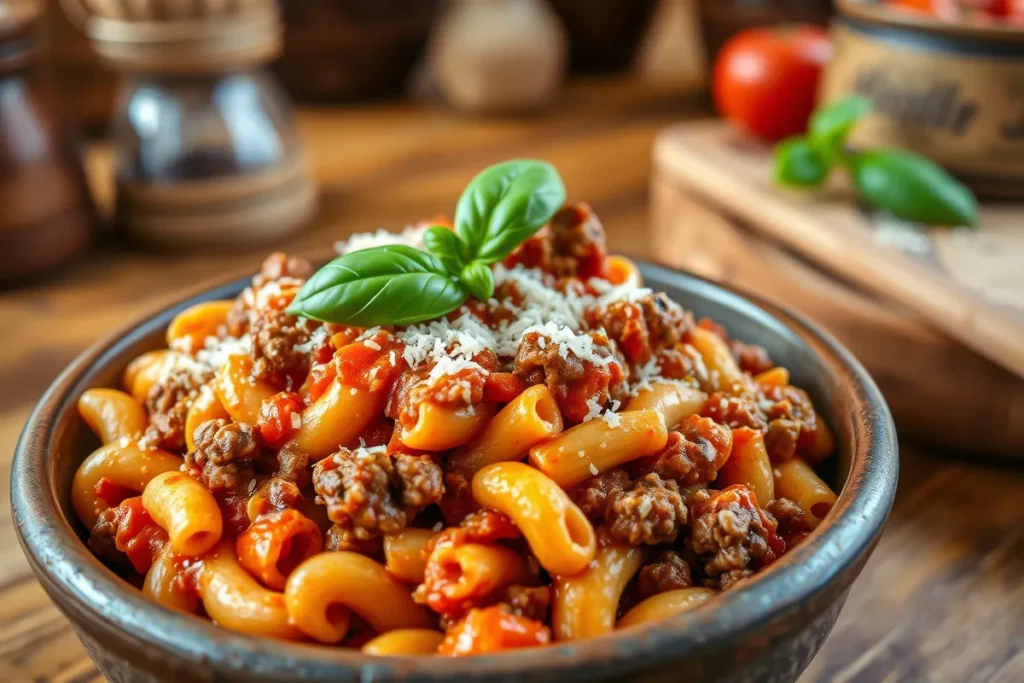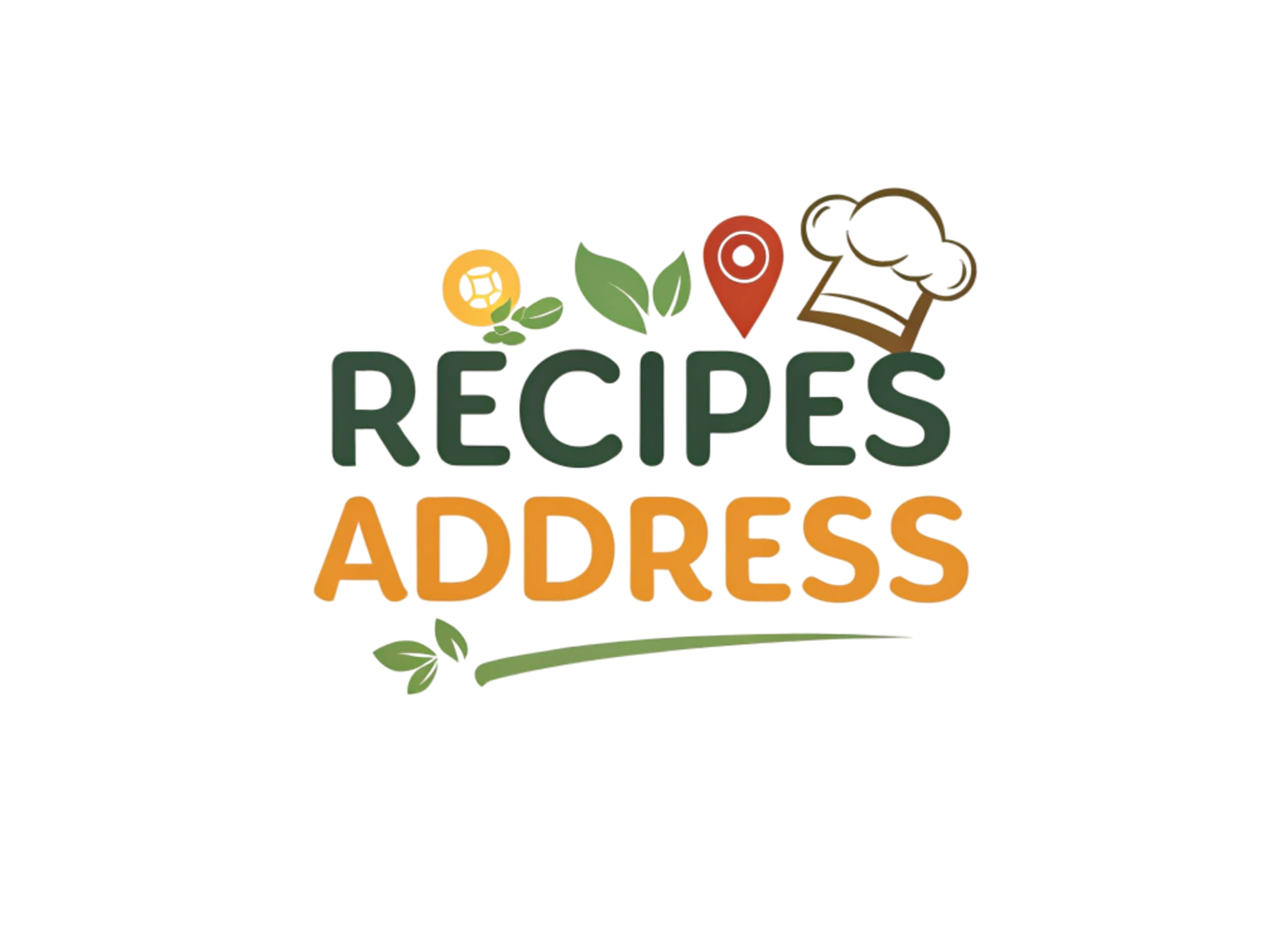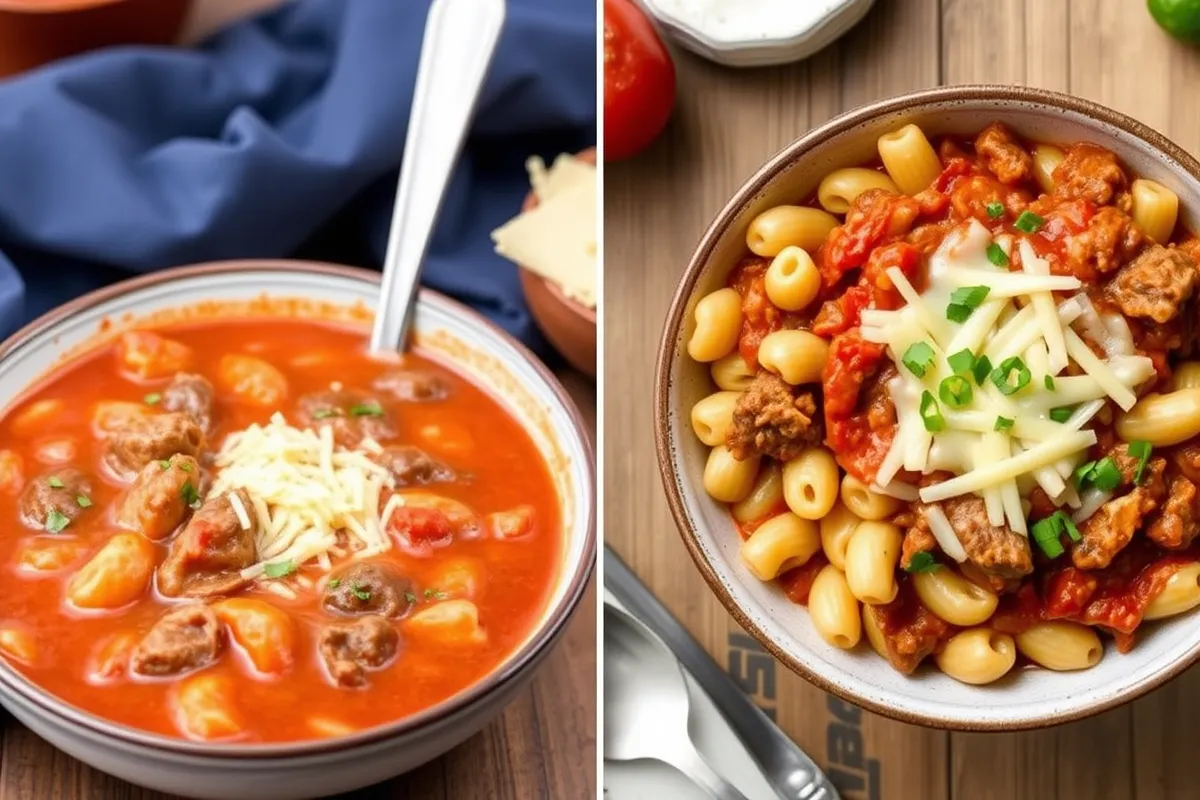Introduction
When it comes to classic comfort foods, goulash and beefaroni are two dishes that frequently come up. Both are hearty, meat-based meals with pasta, making them seemingly similar at first glance. However, as we dive deeper into their histories, ingredients, and cooking methods, we realize that there are distinct differences between these two beloved dishes.
In this article, we’ll explore the key question: Are goulash and beefaroni the same? While they share some similarities, such as the inclusion of beef and pasta, their origins, flavor profiles, and preparation techniques differ significantly. Understanding these differences can help you appreciate the uniqueness of each dish.
By the end of this comparison, you’ll have a clearer understanding of the differences between goulash and beefaroni, allowing you to choose the one that suits your taste and cooking preferences. Let’s dive in and take a closer look at the two dishes, starting with an exploration of goulash.
What Is Goulash?
Goulash is a traditional dish that originates from Hungary, where it has been enjoyed for centuries. Known for its rich flavors and comforting nature, goulash has evolved over time, with various countries adapting the recipe to suit local tastes. Despite the differences in preparation, goulash is typically made using beef, vegetables, and a distinct blend of spices, including the key ingredient—paprika.
The History and Origin of Goulash
The roots of goulash can be traced back to the 9th century, when Hungarian shepherds would prepare a stew over an open fire, using simple ingredients like beef, onions, and paprika. Over time, the dish spread across Central Europe, with each country adding its own twist. In Hungary, goulash remains a symbol of national pride, often served in hearty portions during cold weather.
As the dish traveled, goulash was adapted to include more diverse ingredients such as potatoes, carrots, and tomatoes. This transformation has made the dish more versatile, with many versions now found worldwide.
Traditional Ingredients in Goulash
The traditional goulash is made with a few key ingredients. Beef is usually the primary protein, but lamb can also be used in some variations. The flavor of the dish comes primarily from onions and garlic, which are sautéed to create a base. Paprika, a spice made from dried peppers, is essential to the dish and gives goulash its signature color and flavor. Other ingredients often include:
- Potatoes (optional, but common in many variations)
- Carrots
- Tomatoes or tomato paste
- Beef broth
- A variety of herbs such as thyme or bay leaves
Each region of Hungary and Central Europe may tweak the recipe slightly, adding more vegetables or adjusting the seasoning, but these core ingredients remain.
The Preparation and Cooking Method
Traditional goulash is typically slow-cooked in a large pot, allowing the flavors to meld and the beef to become tender. The process begins by sautéing the onions and garlic, followed by the addition of paprika and other spices. Next, the beef is browned, and vegetables like potatoes and carrots are added. After the ingredients are combined, the dish is simmered with beef broth until the meat is tender and the flavors are fully developed.
While the slow-cooked version is the most common, some quicker adaptations of goulash are prepared by using a pressure cooker or slow cooker for a faster meal. However, nothing compares to the rich depth of flavor developed by the traditional method.
What Is Beefaroni?
Beefaroni is an American comfort food that blends ground beef and pasta in a tomato-based sauce, often seasoned with garlic, onions, and various herbs. While it may share some similarities with goulash, beefaroni is a distinctly different dish, with a focus on simplicity and quick preparation.
The History and Origin of Beefaroni
Unlike goulash, beefaroni has relatively modern origins. It was first popularized in the United States, with many associating it with classic American home-cooked meals. The dish likely evolved from other pasta-and-meat combinations, such as American chop suey or hamburger helper, during the mid-20th century.
One of the most significant influences on beefaroni’s rise in popularity was the convenience of canned pasta products. The iconic brand Chef Boyardee introduced a version of beefaroni that quickly became a household staple, especially among busy families looking for quick and affordable meals.
Traditional Ingredients in Beefaroni
The core ingredients of beefaroni are straightforward, primarily focusing on ground beef, pasta, and a tomato-based sauce. The choice of pasta can vary, but elbow macaroni is the most commonly used, as it is small and holds the sauce well. Other ingredients in traditional beefaroni include:
- Ground beef
- Elbow macaroni (or other pasta)
- Tomato sauce or diced tomatoes
- Onion and garlic for flavor
- Seasonings like oregano, basil, and sometimes sugar to balance the acidity of the tomato sauce
Unlike goulash, beefaroni does not usually include vegetables like potatoes or carrots, and the dish relies more heavily on the beef and pasta as the main components.
The Preparation and Cooking Method
Beefaroni is a dish known for its simplicity and speed. The process typically involves browning the ground beef, then adding onions and garlic to sauté. The tomato sauce and seasonings are then combined with the meat mixture, and the cooked pasta is added to absorb the flavors. The entire dish is simmered for a few minutes to allow the sauce to thicken and the flavors to meld.
The beauty of beefaroni lies in its versatility. While the traditional version uses just a few ingredients, you can easily customize it by adding vegetables, cheese, or other seasonings to create your ideal version. Furthermore, beefaroni can be made in large batches, making it perfect for family meals or meal prepping.
Key Differences Between Goulash and Beefaroni
While goulash and beefaroni may appear similar due to their use of beef and pasta, several key differences set them apart in terms of ingredients, flavor profiles, and cooking methods.
Ingredients
The most noticeable difference between goulash and beefaroni lies in their ingredients. While both dishes use beef and pasta, goulash typically incorporates a variety of vegetables such as potatoes, carrots, and sometimes tomatoes. This gives the dish a heartier, stew-like consistency. On the other hand, beefaroni focuses primarily on ground beef, pasta, and a tomato-based sauce. The ingredients in beefaroni are simpler and more straightforward, often with a reliance on basic pantry staples.
Another major distinction is the use of paprika in goulash. This key spice gives goulash its signature color and flavor, while beefaroni relies more on garlic, onions, and Italian herbs like basil and oregano for seasoning. This difference in seasoning further highlights the divergence in flavor between the two dishes.
Cooking Method
The cooking methods for goulash and beefaroni are also quite different. Goulash is traditionally slow-cooked, allowing the beef to become tender and the flavors to develop over time. The simmering process also helps the vegetables release their natural flavors, creating a rich and hearty dish. While there are quicker adaptations of goulash, especially using a slow cooker or pressure cooker, the dish is typically associated with a longer cooking time.
Beefaroni, on the other hand, is a much quicker dish to prepare. The ground beef is browned, and the ingredients are combined in a single pot, with the pasta cooking directly in the sauce. This makes beefaroni a fast and convenient meal, perfect for busy weeknights or for those looking to make a simple, satisfying dish in less time.
Flavor Profile
The flavor profiles of goulash and beefaroni are also distinct. Goulash has a rich, savory, and slightly spicy flavor due to the use of paprika and the slow-cooked nature of the dish. The vegetables and beef meld together, creating a comforting, stew-like texture. The flavors are deep and complex, making goulash an ideal dish for cold weather or when you’re in the mood for something hearty.
Beefaroni, on the other hand, has a milder, more straightforward flavor. The tomato sauce provides a tangy base, while the ground beef adds richness. The seasoning is lighter, with Italian herbs like oregano and basil giving the dish a more familiar, pasta-centric flavor. It’s a comforting, simple dish but with a lighter, more refreshing taste compared to goulash.
Cultural Significance
While both dishes are beloved in their respective regions, goulash holds a particularly strong cultural significance in Hungary and Central Europe. It is often seen as a national dish and is frequently served in social gatherings and family meals. Its deep historical roots and evolving recipes make it a dish rich in tradition.
Beefaroni, on the other hand, is more commonly associated with American comfort food. While it may have been influenced by older European pasta dishes, it is largely considered an American creation. The dish gained widespread popularity through convenience brands like Chef Boyardee, making it a staple in many American households.
How to Make Goulash at Home
Making goulash at home is a satisfying and straightforward process, whether you’re sticking to a traditional Hungarian recipe or giving it your own twist. By following the basic steps and incorporating key ingredients, you can create a dish that is both hearty and flavorful.

Ingredients Needed for Homemade Goulash
To make a traditional goulash, you’ll need the following ingredients:
- Beef stew meat (about 2 pounds), cut into cubes
- Onions (1-2 medium, chopped)
- Garlic (3-4 cloves, minced)
- Paprika (2 tablespoons, preferably Hungarian)
- Tomatoes (2 medium, chopped, or 1 can of diced tomatoes)
- Beef broth (4 cups)
- Carrots (2, sliced)
- Potatoes (3 medium, peeled and cubed)
- Bay leaves (2)
- Thyme (1 teaspoon, dried)
- Salt and pepper to taste
- Olive oil (for sautéing)
- Chopped parsley (for garnish)
Cooking Instructions for Goulash
- Prepare the Beef: Begin by heating olive oil in a large pot over medium-high heat. Brown the beef cubes on all sides, seasoning with salt and pepper as you go. This step helps to develop the deep flavors in the meat.
- Sauté the Onions and Garlic: Once the beef is browned, add the chopped onions to the pot and sauté until they become translucent, about 5-7 minutes. Add the minced garlic and cook for another minute, ensuring it becomes fragrant.
- Add Paprika and Other Spices: Sprinkle in the paprika, thyme, and bay leaves. Stir to coat the beef and onions evenly with the spices. The paprika is what gives goulash its signature flavor, so don’t skip this step!
- Add Tomatoes and Beef Broth: Stir in the chopped tomatoes or canned diced tomatoes, allowing them to combine with the beef and spices. Then, pour in the beef broth, ensuring that the beef is fully covered. Bring the mixture to a boil.
- Simmer the Goulash: Once boiling, reduce the heat and let the goulash simmer for about 1 hour. This allows the beef to become tender and the flavors to meld together. Stir occasionally to prevent the ingredients from sticking.
- Add the Vegetables: After the meat has softened, add the sliced carrots and cubed potatoes to the pot. Let the goulash simmer for another 30 minutes, or until the vegetables are tender and the broth has thickened slightly.
- Serve and Garnish: Once everything is fully cooked, remove the pot from heat and discard the bay leaves. Serve the goulash in bowls, garnished with fresh parsley for a pop of color and flavor.
Tips for a Perfect Goulash
- Use Good Quality Paprika: The flavor of paprika is central to goulash, so it’s worth using high-quality, preferably Hungarian, paprika for an authentic taste.
- Slow Cooking: For even more tender meat and a richer flavor, you can prepare the goulash in a slow cooker. Simply follow the steps up to adding the beef broth, then transfer the ingredients to the slow cooker and cook on low for 6-8 hours.
- Adjust the Thickness: If you prefer a thicker goulash, you can mash some of the potatoes directly in the pot to create a creamier consistency.
Variations of Goulash
While the traditional Hungarian goulash is a staple in many households, there are numerous variations of the dish depending on regional preferences. Some versions may include ingredients such as bell peppers, cabbage, or even different cuts of beef. You can also experiment with different herbs and seasonings to create your own take on this classic dish.
How to Make Beefaroni at Home
Making beefaroni at home is an easy and quick way to enjoy this comforting dish. Unlike goulash, which requires slow cooking, beefaroni can be made in a fraction of the time, making it ideal for busy weeknights or when you want a filling meal without a lot of effort.

Ingredients Needed for Homemade Beefaroni
To make a classic homemade beefaroni, you will need the following ingredients:
- Ground beef (1 pound)
- Elbow macaroni (2 cups)
- Tomato sauce (1 can, about 15 ounces)
- Diced tomatoes (1 can, about 14 ounces)
- Onion (1 medium, chopped)
- Garlic (2 cloves, minced)
- Italian seasoning (1 teaspoon)
- Dried basil (1 teaspoon)
- Salt and pepper to taste
- Mozzarella cheese (1/2 cup, shredded) (optional, for a cheesy topping)
- Olive oil (for sautéing)
Cooking Instructions for Beefaroni
- Cook the Pasta: Start by cooking the elbow macaroni according to the package instructions. Once cooked, drain the pasta and set it aside. Be sure to cook it al dente, as it will continue to absorb the sauce as it simmers.
- Brown the Ground Beef: In a large skillet or pot, heat a tablespoon of olive oil over medium-high heat. Add the ground beef and cook, breaking it up with a spoon, until browned and fully cooked. Drain any excess fat from the beef.
- Sauté the Onion and Garlic: To the browned beef, add the chopped onion and garlic. Sauté for about 5 minutes, or until the onion becomes soft and translucent, and the garlic becomes fragrant.
- Add the Tomato Sauce and Seasonings: Stir in the tomato sauce, diced tomatoes, Italian seasoning, and dried basil. Season with salt and pepper to taste. Let the sauce simmer for about 5-7 minutes, allowing the flavors to combine.
- Combine Pasta and Sauce: Add the cooked macaroni to the sauce and stir to combine, ensuring that the pasta is coated evenly with the tomato sauce mixture. Continue to cook for another 3-5 minutes so that the pasta can absorb the flavors.
- Add Cheese: Once the pasta and sauce are fully combined, sprinkle the Mozarella cheese over the dish and stir to incorporate it. If you prefer a cheesy, baked version, you can top the beefaroni with shredded mozzarella cheese and place it under the broiler for 2-3 minutes until the cheese melts and becomes bubbly.
- Serve: Once the cheese has melted (if using mozzarella), serve the beefaroni hot. Garnish with additional Mozarella cheese if desired.
Tips for a Perfect Beefaroni
- Use Lean Ground Beef: For a leaner option, opt for ground turkey or chicken instead of beef. This will reduce the fat content while still providing the hearty meatiness that beefaroni is known for.
- Customize the Sauce: You can add extra seasonings such as crushed red pepper flakes for a bit of heat or a splash of Worcestershire sauce for a richer flavor.
- Make It Ahead: Beefaroni can be made in advance and stored in the refrigerator for up to 3 days. Simply reheat it on the stove or in the microwave before serving.
- Add Vegetables: While traditional beefaroni doesn’t include vegetables, feel free to add bell peppers, mushrooms, or spinach to boost the dish’s nutritional value.
Variations of Beefaroni
While the traditional beefaroni is simple and satisfying, you can easily customize it based on your preferences. Some popular variations include:
- Cheesy Beefaroni: Add more cheese to the dish for an extra creamy, cheesy texture. You can use a combination of mozzarella and cheddar for a cheesy delight.
- Baked Beefaroni: After combining the pasta with the sauce, transfer it to a baking dish, top with shredded mozzarella, and bake at 350°F (175°C) for 15-20 minutes or until the cheese is bubbly and golden brown.
- Vegetable Beefaroni: For a healthier twist, add vegetables such as zucchini, spinach, or bell peppers to the sauce to enhance the flavor and nutritional content of the dish.
Conclusion
In summary, while both goulash and beefaroni are beloved comfort foods, they are distinct dishes with unique flavors, ingredients, and preparation methods. Goulash is a slow-cooked, stew-like dish that incorporates paprika, beef, and vegetables in a rich, savory broth. It has deep roots in Hungarian cuisine and is perfect for those who enjoy a hearty, flavorful meal with tender meat and vegetables.
On the other hand, beefaroni is a quicker, pasta-based dish that combines ground beef, tomato sauce, and elbow macaroni. It is an American classic that is easy to make and offers a tangy, savory flavor with a satisfying cheese topping.
Both dishes have their own charm and can be adapted to suit personal preferences. Whether you crave a rich, comforting stew or a simple, cheesy pasta dish, you can’t go wrong with either option.
Ultimately, whether you’re making goulash for a special occasion or whipping up a quick batch of beefaroni for dinner, both dishes bring joy to the table and offer a warm, fulfilling meal.

